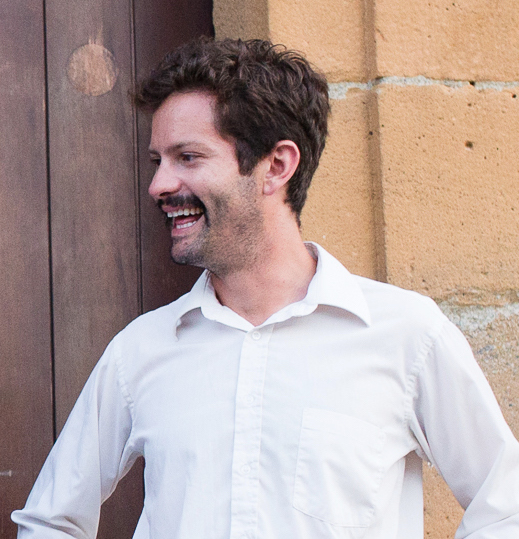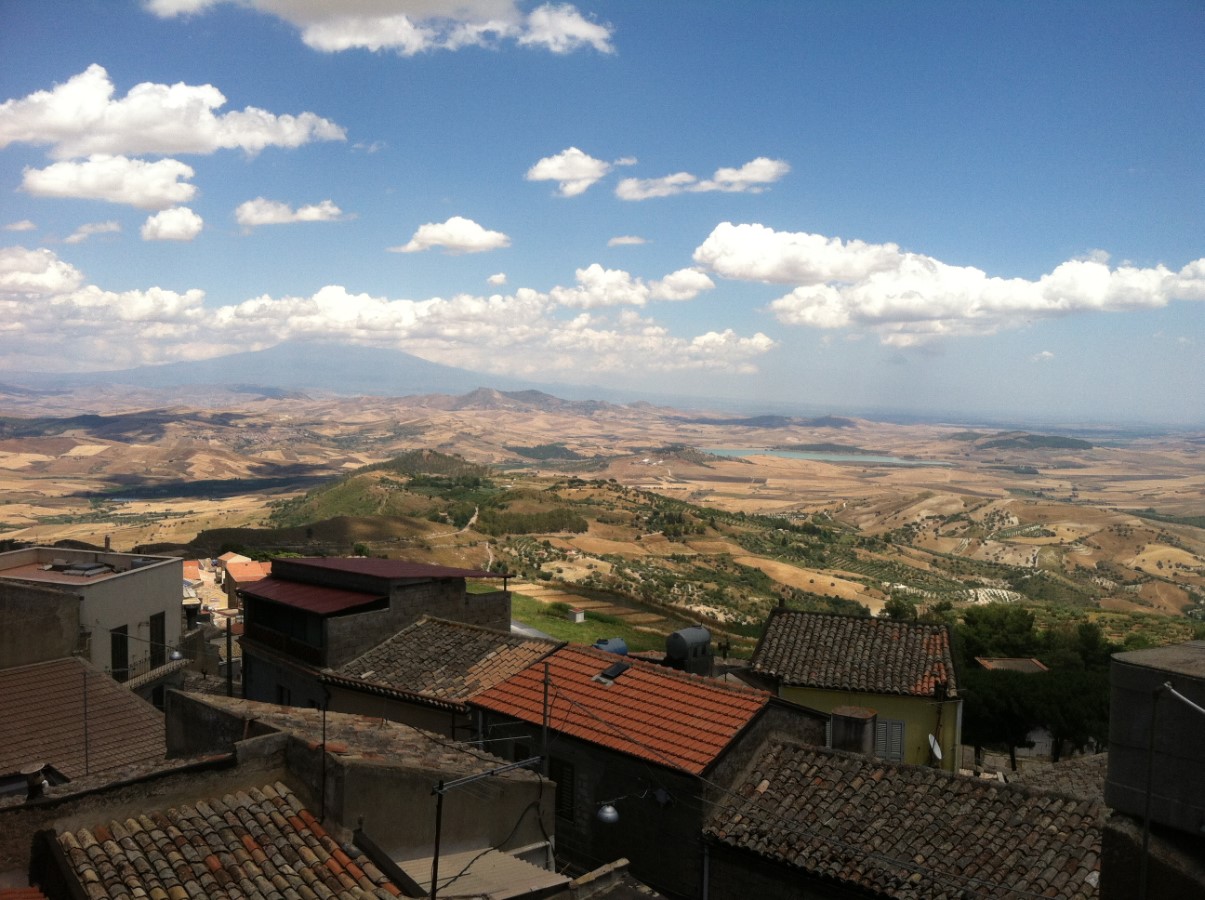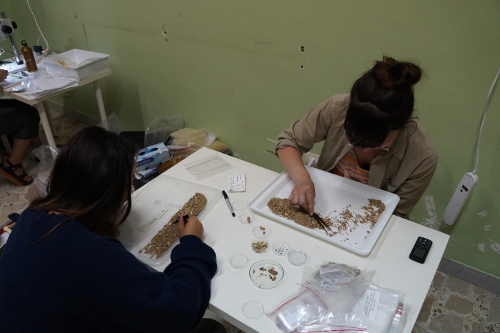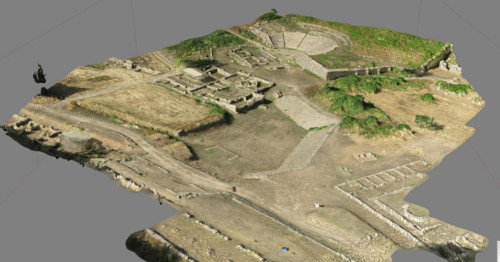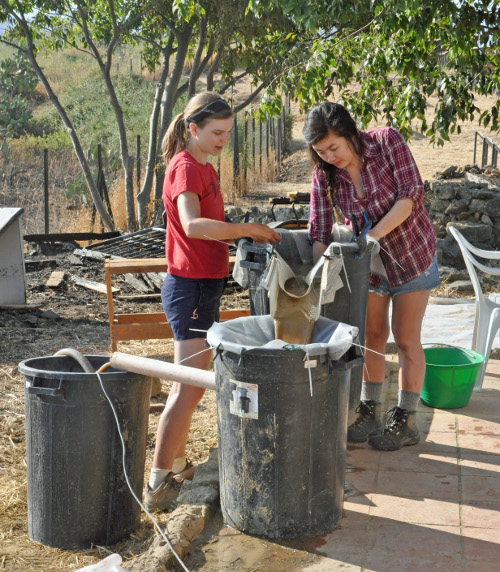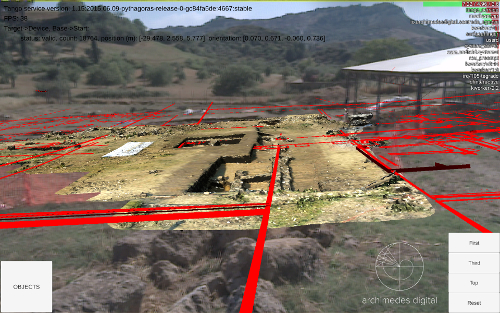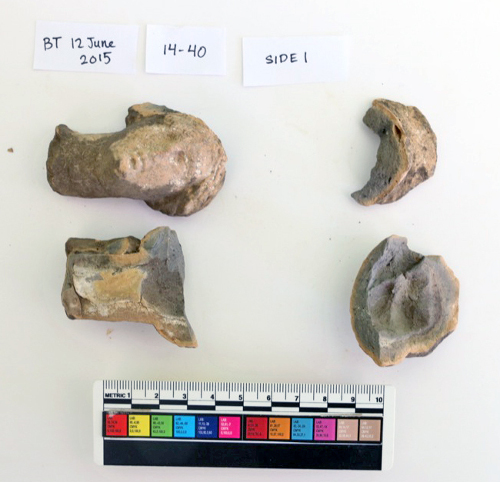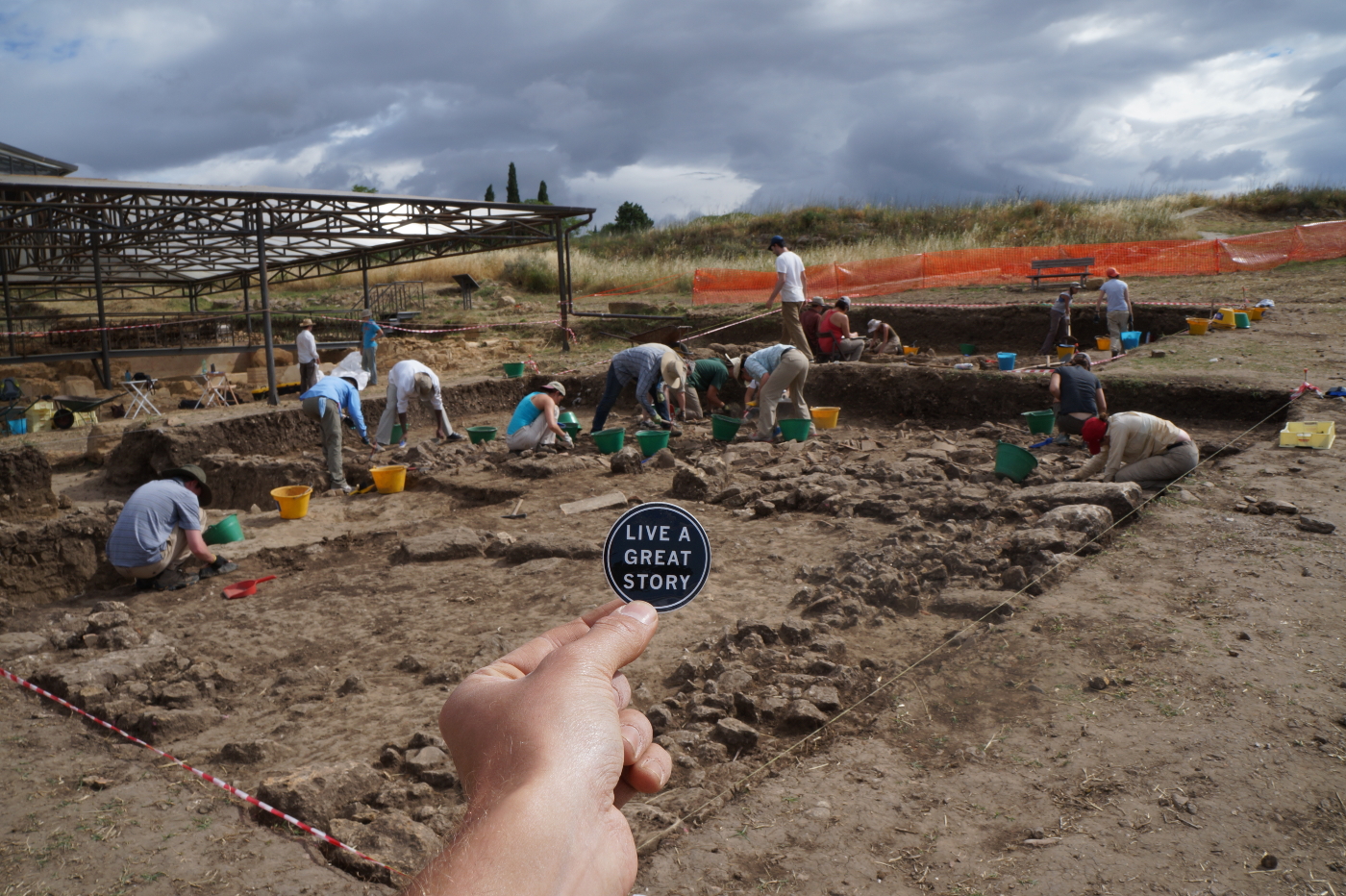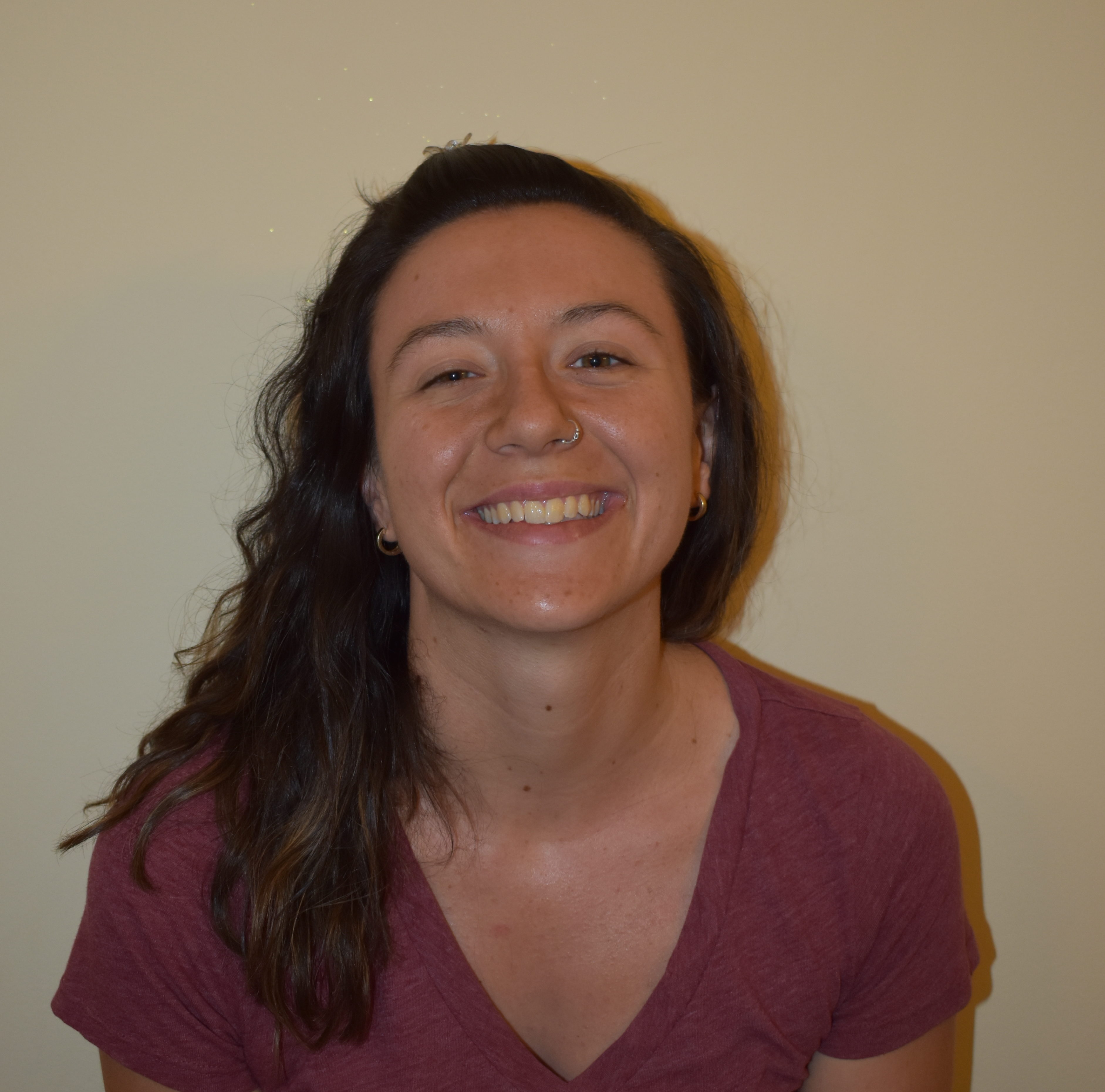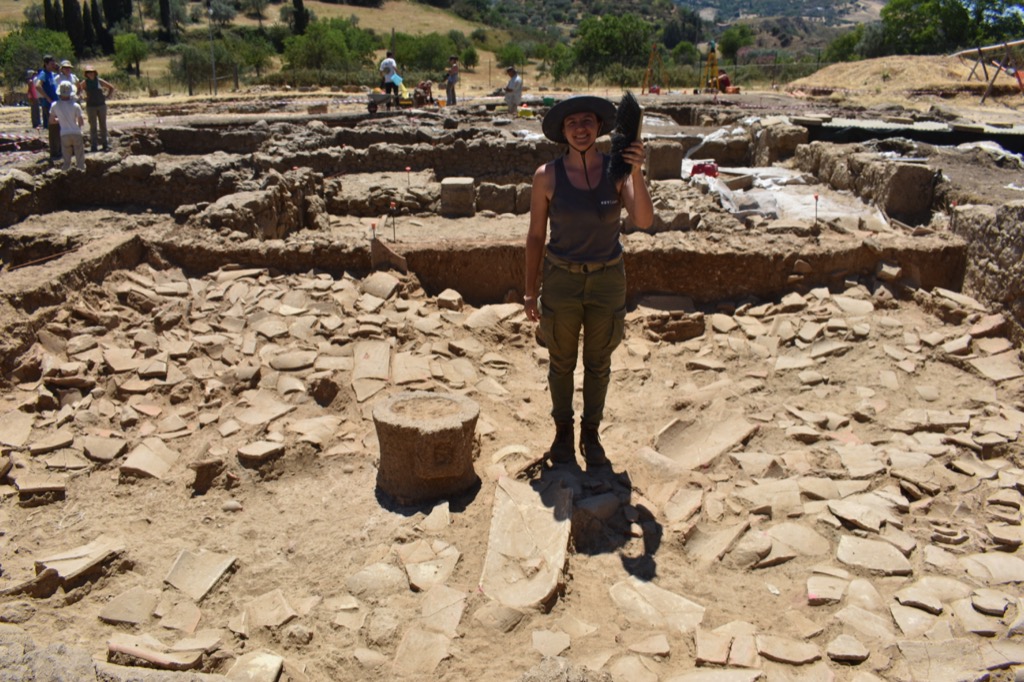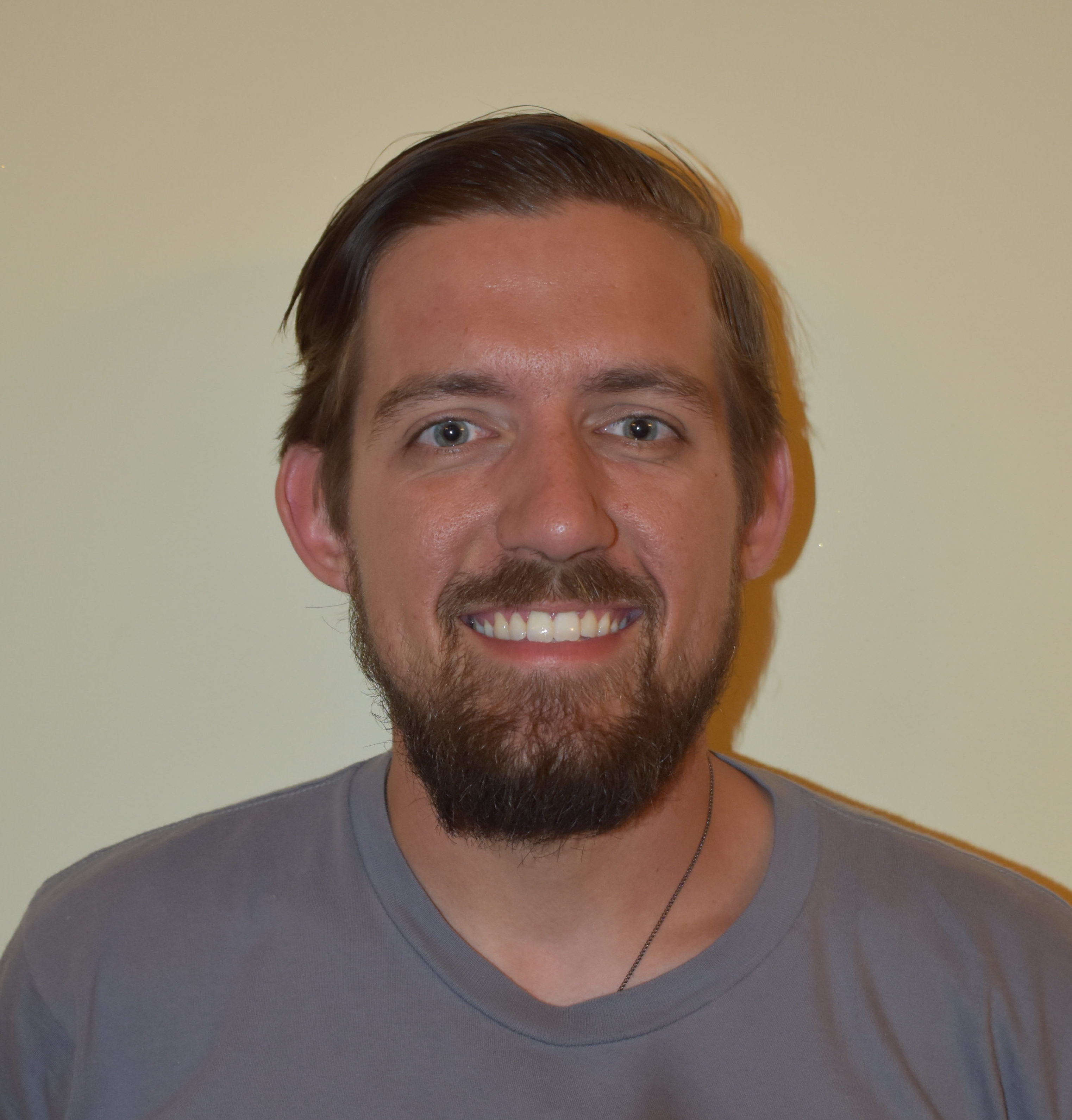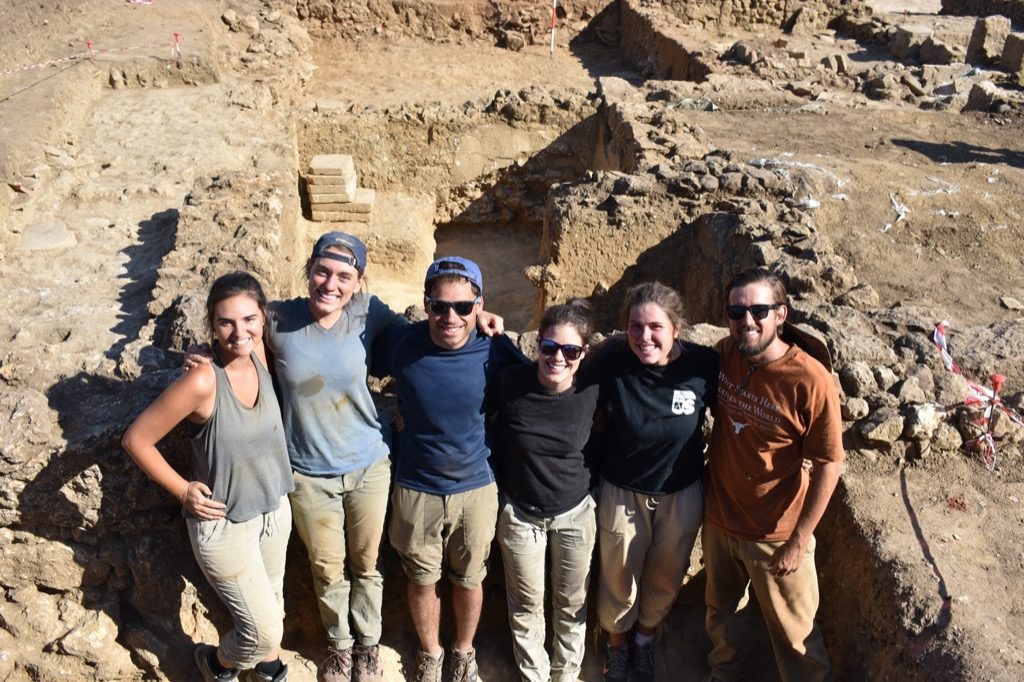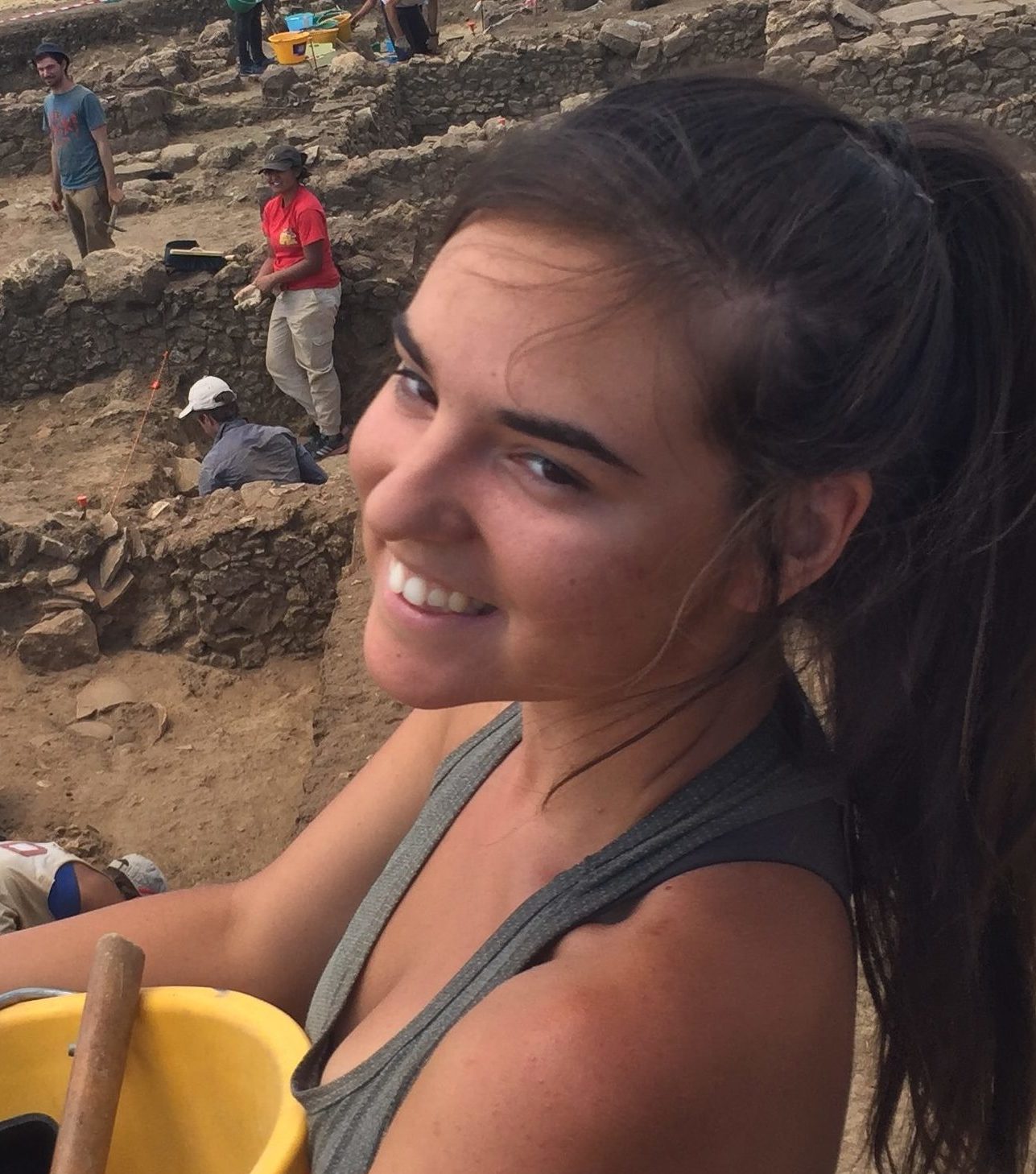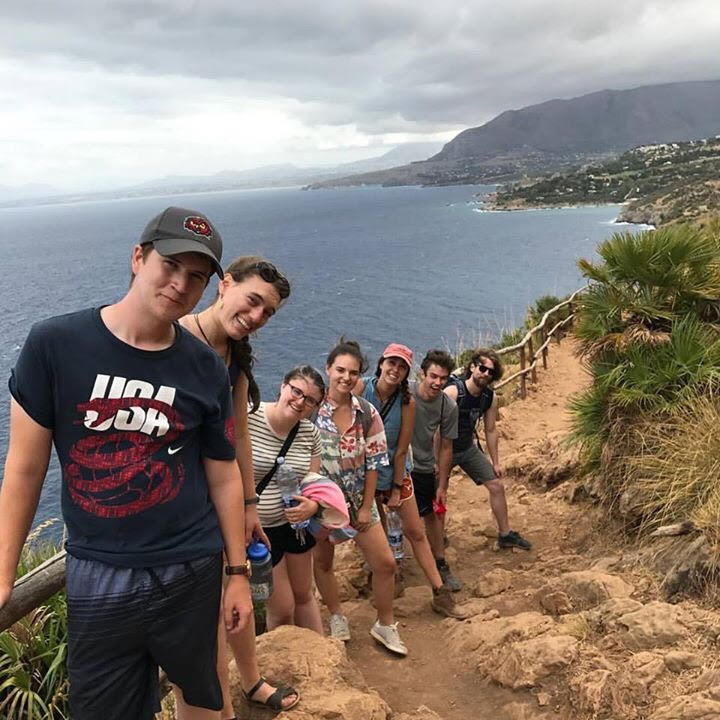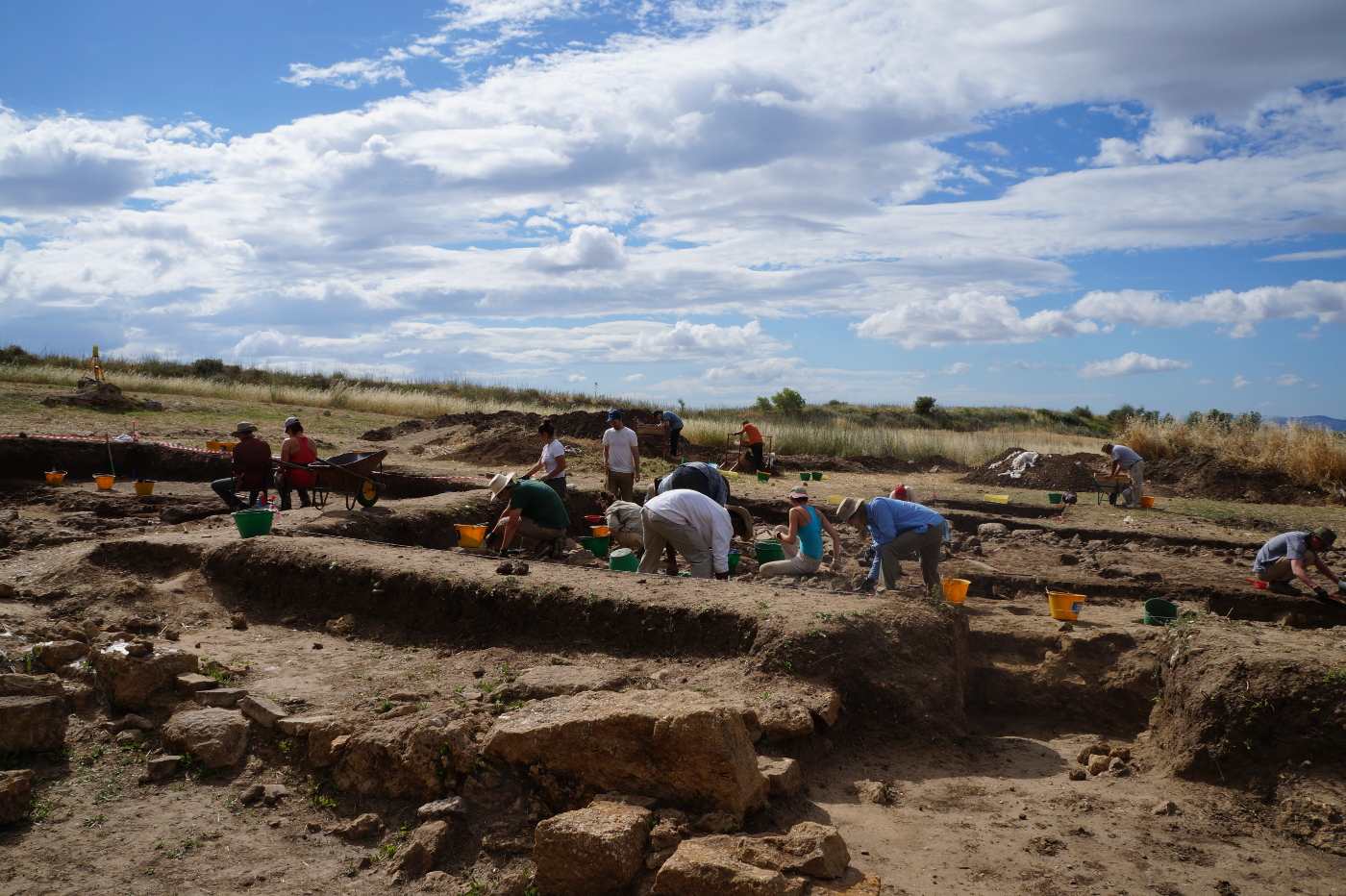Excavating the Contrada Agnese
The American Excavations at Morgantina: Contrada Agnese Project (CAP), is an ongoing, multiyear research and excavation project launched in 2013 to investigate developments taking place in the urban center of Morgantina between the third and first centuries BCE. The project, funded largely by Princeton University, includes members from a large number of universities spread across the United States.
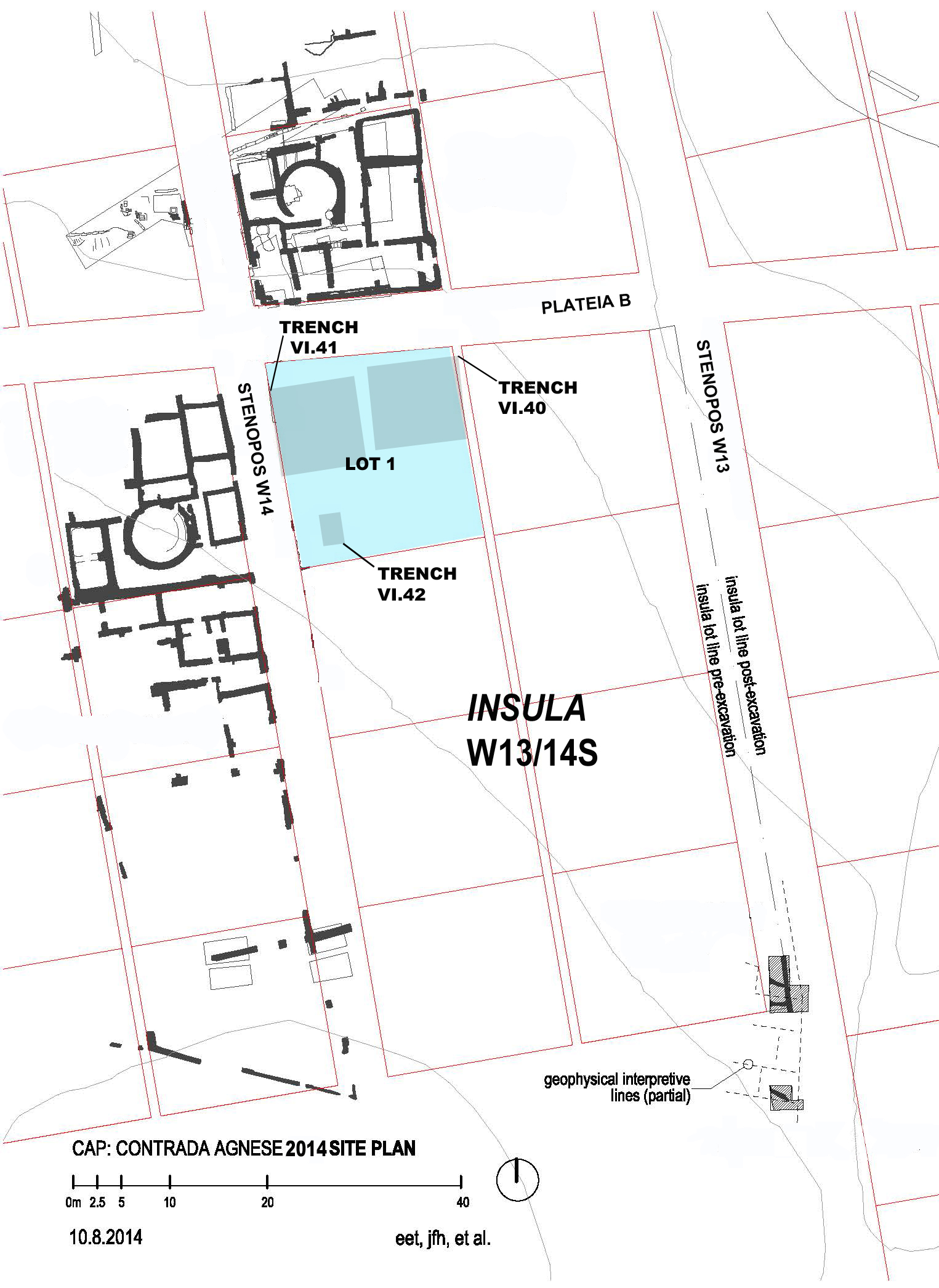 Plan of Contrada Agnese showing locations of the 2014 trenches.
Plan of Contrada Agnese showing locations of the 2014 trenches.
CAP excavations are carried out under the direction of Prof. Alex Walthall (UT Austin) with the permission of the Directors of the American Excavations at Morgantina, Prof. Malcolm Bell III (UVA) and Prof. Carla Antonaccio (Duke), and in cooperation with the Parco Archeologico Regionale di Morgantina and the Soprintendenza ai Beni Culturali e Ambientali di Enna. CAP staff collaborate with a team of graduate and undergraduate volunteers who apply and are accepted to the project, contributing their time, intellect, and energy.
The site of Morgantina has provided valuable information concerning the Hellenistic west and Roman military and political expansion across the Mediterranean. Our project explores transitions in the urban center, with a particular focus on identifying points of continuity and transformation in the city’s social and economic fabric during the first two centuries of Roman rule in Sicily. In 2012, a geophysical survey indicated dense occupation in the Contrada Agnese and abnormalities in the city’s grid plan. In 2013, CAP excavated its first trenches (VI.34 and VI.35), which confirmed the results of that survey and showed how the city’s grid plan was adapted to adverse topography. In 2014, three trenches (VI.36, VI.37, and VI.38) were opened just south of the North Baths revealing a complex structure of uncertain function. In 2015, three new and expanded trenches (VI.39, VI.40, and VI.41) further explored this structure’s architecture, deeper strata, and others features within, including possible evidence for a peristyle courtyard and cache of large storage jars (pithoi).
Beyond excavation, the members of CAP are committed to a rigorous program of recording, conservation, analysis, and publication. To achieve these goals, the CAP team is divided among several branches: Excavation, Data, Museum, Conservation, Environmental, and Geospatial. Each of these six branches uses a variety of tools and methods to effectively accomplish their goals. Throughout each season, volunteers are given opportunities to work with the various CAP teams.
Our preliminary report on the 2013 season is available on Fasti Online and our 2014 report will be available later this year.
Our Teams
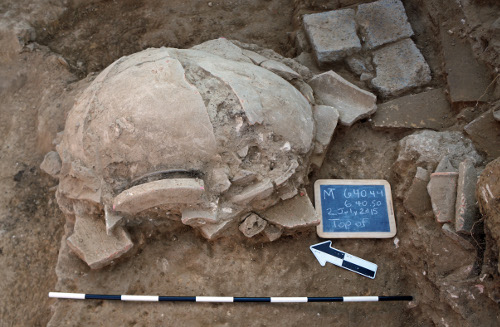
Excavation
The excavation team works on site and consists of two trench supervisors, two assistant supervisors, and an elite team of volunteers. It is responsible for excavation, but also for documentation of stratigraphy and finds through drawing, surveying, and photography. Learn more
Museum
CAP’s Museum Team is responsible for making sure that all objects which leave the archaeological site are properly processed and consigned to long-term storage in the Museo Archeologico Regionale di Aidone. Learn more
Geospatial
CAP’s Geospatial Team employs spatial technologies to achieve several objectives, including the construction and maintenance of a core GIS database for the excavation, large-scale study of the topography and land use in the broader region around Serra Orlando, and small-scale initiatives related to the accurate recording and digital representation of our active excavations. Learn more
Environmental
A critical component of archaeological interpretation is attempting to understand how a site was related to its broader context: how the ancient inhabitants were influenced by and responded to the landscape around them. Learn more
Data
The CAP Data Team is primarily responsible for integrating thousands of data points into project databases, allowing us to nimbly track the progress of our research in real-time. CAP is currently developing methods to improve information sharing, both within the group and with the wider archaeological community. Learn more
Conservation
CAP’s Conservation Team is responsible for the treatment and storage of archaeological materials that come to light in the CAP excavations. An archaeological conservator’s role is to ensure the long-term preservation of the artifacts, including evaluating their current condition, and slowing deterioration through appropriate treatment and storage. Learn more
Publications and Presentations
CAP2016: Director’s Report from the Field
2016 was the fourth season of the American Excavations at Morgantina: Contrada Agnese Project (CAP), sponsored by the Department of Art & Archaeology at Princeton University. Over eight weeks in June and July, the CAP team worked together under the brilliant Sicilian sun to excavate and study the material remains of a modest house of Hellenistic date that once occupied one residential lot at the western edge of the ancient city.
CAP2015: Director’s Report from the Field
This year marked the third season of the American Excavations at Morgantina: Contrada Agnese Project (CAP), a multi-year excavation and research project sponsored by Princeton University.
Preliminary Report on the 2014 Field Season of the American Excavations at Morgantina: Contrada Agnese Project (CAP)
CAP 2014: Director’s Report from the Field
The American Excavations at Morgantina: Contrada Agnese Project (AEM: CAP) is a multi-year excavation and research project, sponsored by Princeton University. Our investigations focus on occupation at the far western edge of the ancient city in order to better understand the lives of those who dwelled on the margins of Hellenistic and Roman Morgantina.
Who We Are
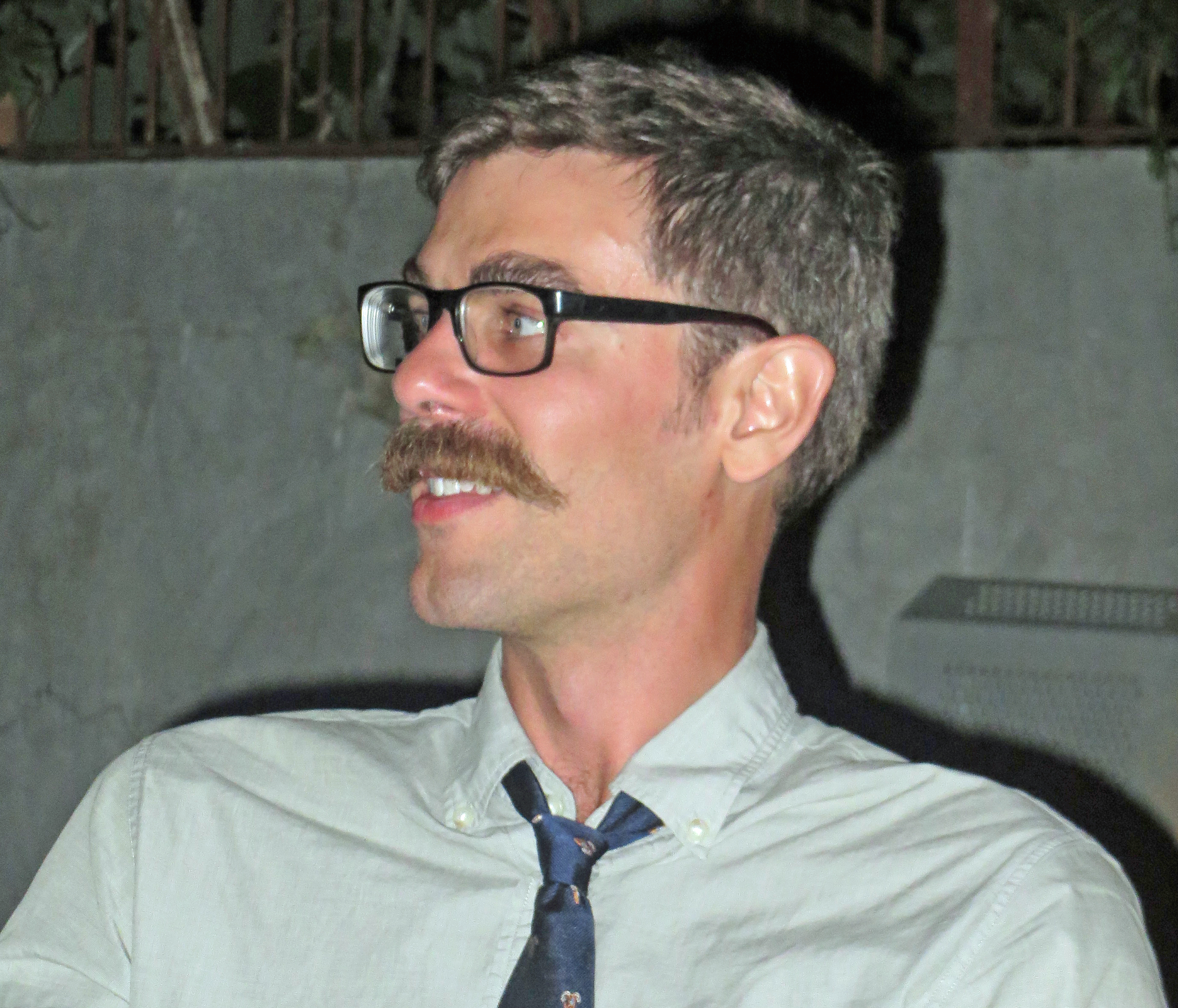
Alex Walthall

Annie Truetzel
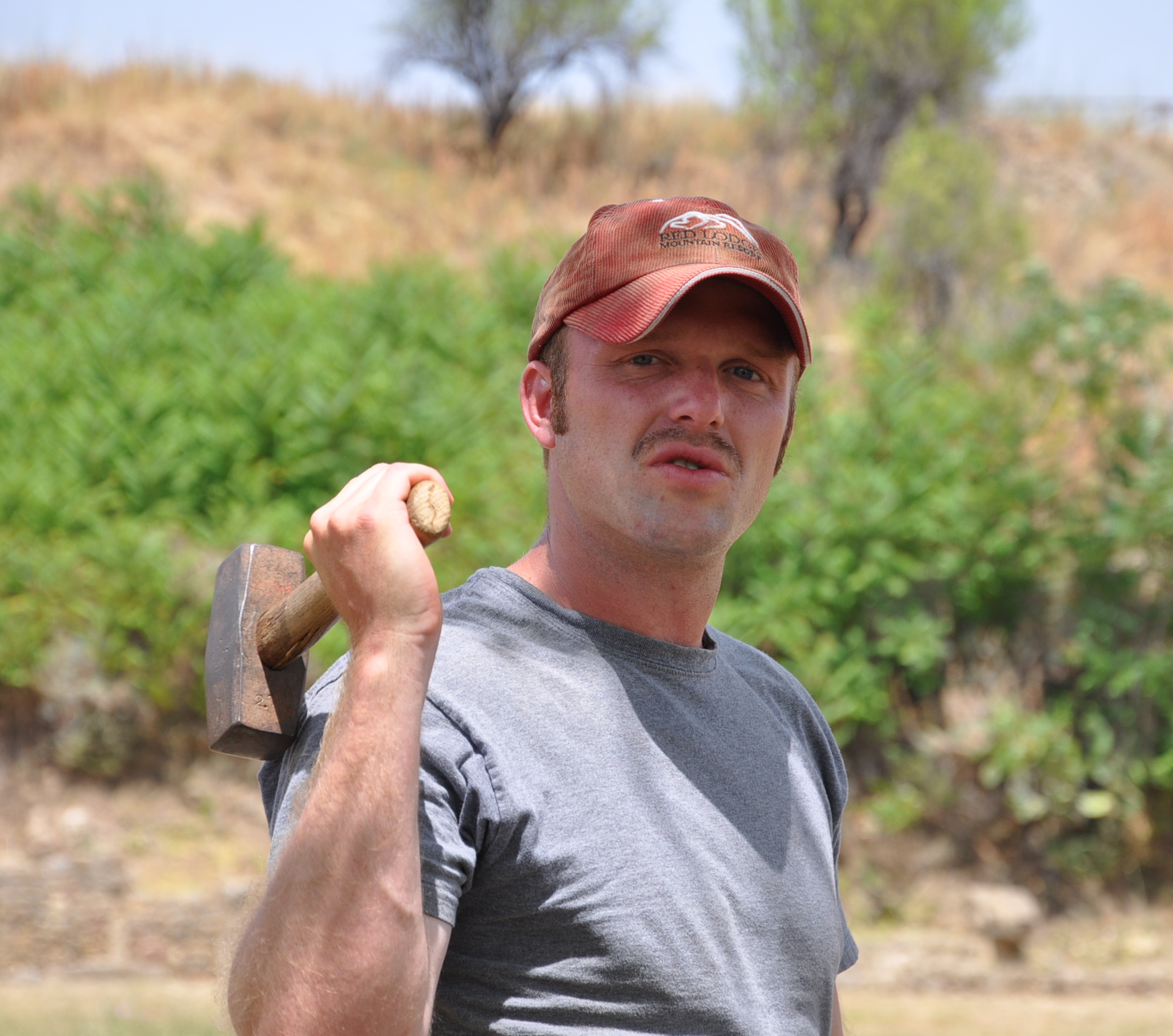
James Huemoeller
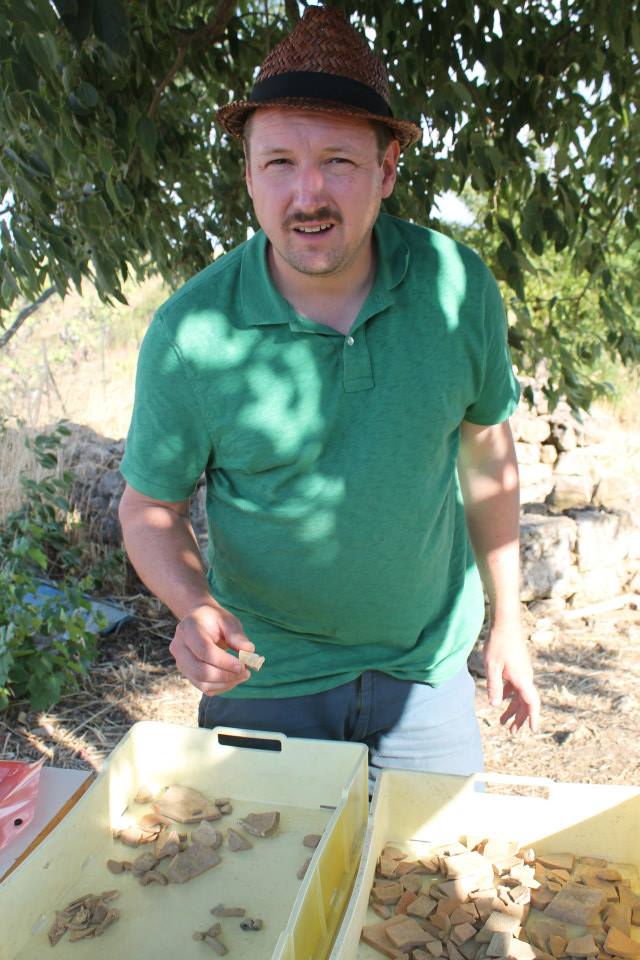
Jared Benton
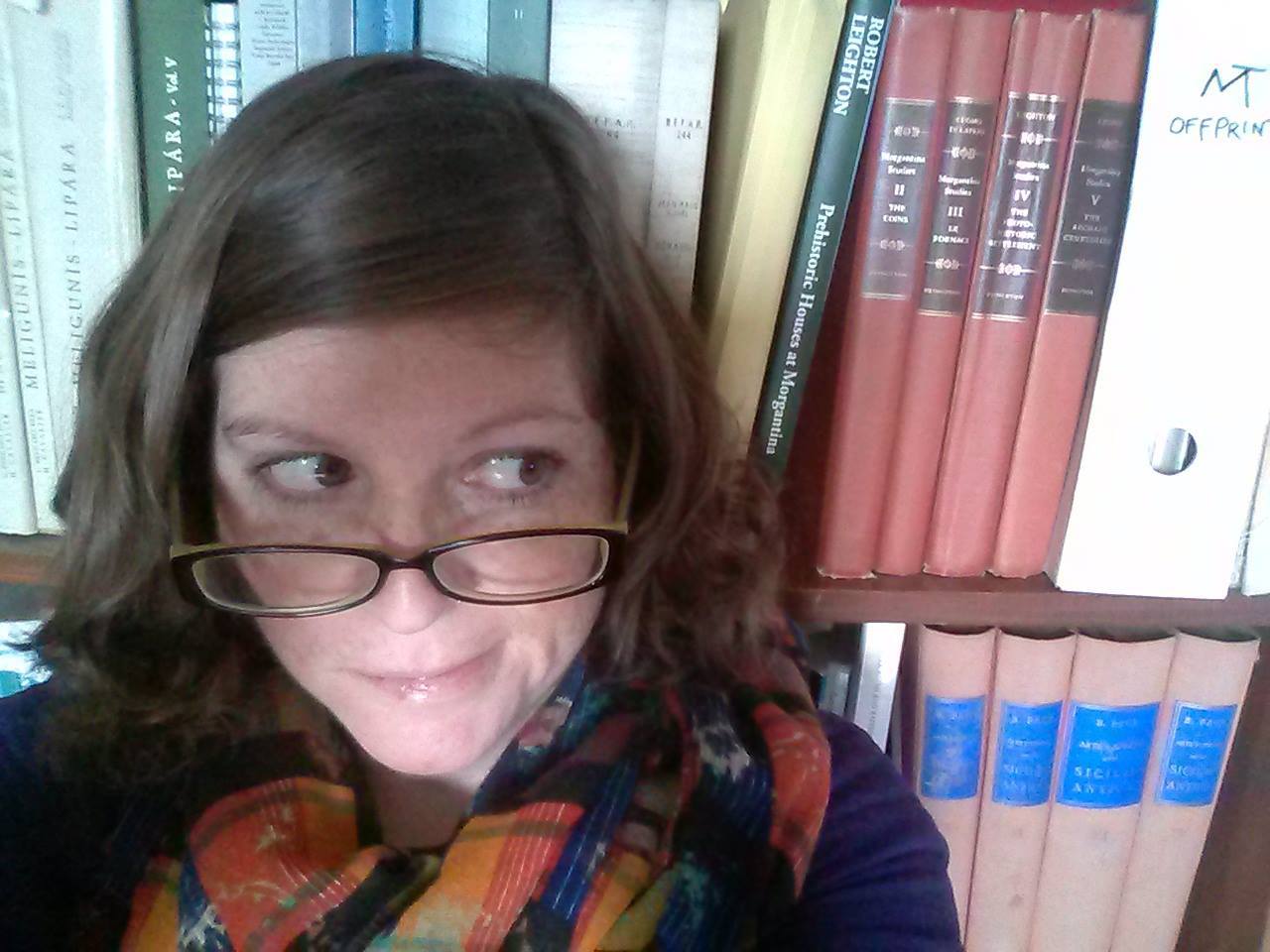
Leigh Lieberman
